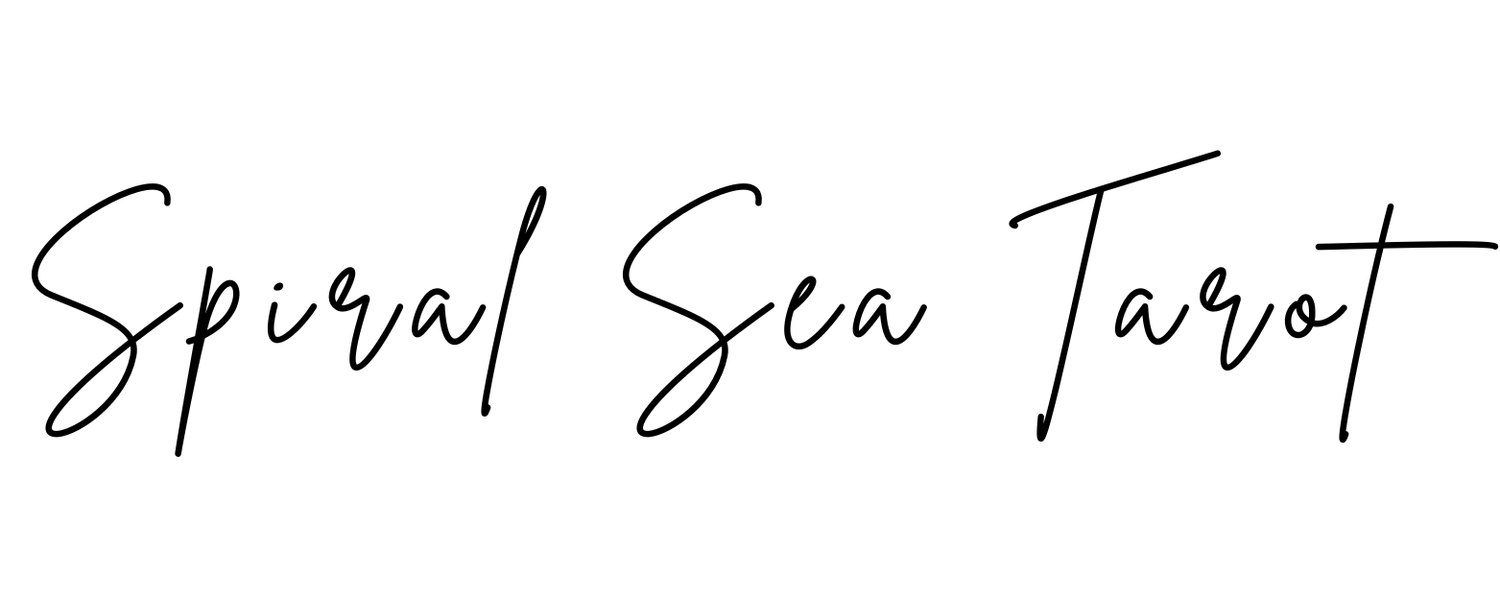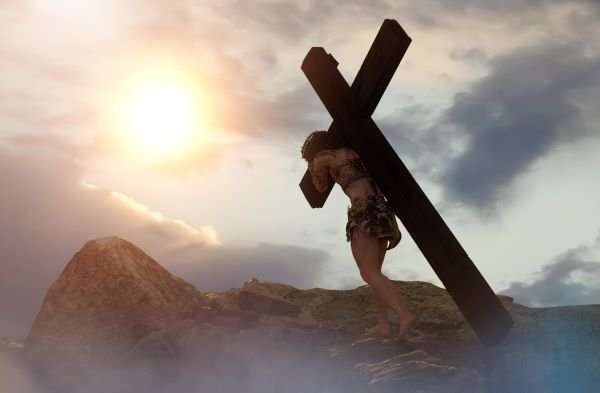Answering Life's Big Questions With Tarot
I’ve been thinking recently about the relevance of asking bigger, more impersonal questions of the tarot. I think for many of us, we have adopted this perspective that the specificity of the question dictates the quality of the response, and some questions are better left alone. But, are there any questions truly off the table? Sure, perhaps queries that contradict a personal set of ethics may be out of bounds, but assuming the question passes the “morality test”, why can’t we go there?
With that in mind, we turned to tarot and asked one of those big questions, curious to see what the response might be. That question went a little something like this - “Why do we come here? What is the purpose of incarnation here?” (stay with us ‘til the end because we’ll be answering a second big question to interesting results)
To clarify, we recognize this could also be asked in a very personal way as we all likely have different reasons for being here. We were, however, thinking in somewhat grander terms, kind of like, “what is the reason for this place and why do we, collectively, choose to endure it?” I admit, it was asked in a moment of frustration and so likely carried that tone into the reading and subsequent response.
The question in and of itself kind assumes many things off the bat. Things we can’t actually know for sure. It assumes there is some reason for this beyond random chance, it assumes that there is more than one option in terms of places to go/incarnate. It probably also assumes incarnations are numerous, or at least, that’s the angle we’re going into this with. Another thing to note is this: Obviously these questions, impersonal as they are, impact all of us. The answer to this questions has implications that extend beyond the lives of Julia and Tim. If you were to ask this same question, you would get your own results which would likely differ. So perhaps then, there are multiple pieces to this puzzle and in the moment of asking, you are gifted one part which you uniquely need to hear at that time. What came to us is by no means an answer to this question for anyone other than us (unless it absolutely resonates!). It’s simply an opportunity to play and stretch the utility of this tool, while also exploring some really interesting concepts.
Ok, now back to the question. “Why do we come here? What is the purpose of this place?”
We shuffled, as we do, and one card flipped out gymnast-style. It landed, we looked at it and we contemplated. But, in the midst of all of that, we realized a second card had more stealthily extracted itself from the deck and was laying by my leg. It had gone unnoticed, so we picked it up, intuiting it had a layer to add. Ultimately, the two cards we ended up with were as follows -
The 10 of Wands and The Hanged Man (insert wide eyes and audibly gasp here).
The moment we laid these cards side-by-side, we realized how much story was unfolding between them. In fact, there is so much happening here, we decided to explore it in more depth for our 78 Connections series. For the purpose of this article though, let’s just do a brief comparison before we get to what it might all mean.
Both figures share some visual likeness i.e. blond hair, similar style of dress (tights, tunic with belt). They also both have arms crossed - The Hanged Man behind them, the 10 of Wands in front.
While The Hanged Man is a Major, there is definitely some wand-like activity happening in the card. Just look at the cross they are hanging from - it has the little leaves and all!
There are some fascinating numerological links between these cards. For instance, if you add them together (10 + 12) you arrive at 22. 22 is significant as it points to the 22 Majors in tarot, the 22 letters of the Hebrew alphabet, 22 paths on the tree of life, 22 alchemical symbols etc. If you take the 2 cards separately, they also have significant numbers on their own. 10 being the number of spheres on the tree of life and 12 being the number of signs in the zodiac. If that were not enough, the number 12 does an interesting via mathematical extraction. If you add up all the numbers between 1 and 12 (1+2+3+4+5+6+7+8+9+10+11+12), you get a sum of 78 - the number of cards in a complete set of tarot. These cards together, and also on their own, seem to culminate in mystical sums where we get the entirety of something of importance; all the paths on the tree of life, the entire deck of tarot, the whole zodiacal wheel. There is a sense then that the interplay of these numbers may hold “the all”.
But, what the hell does it “all” mean?
Well, if we think to the number connection above, there seems to be a strong link here to cycles. The number 10 (think: The Wheel of Fortune) speaks to revolutions, movement and patterns especially on a karmic scale. On the other hand, the number 12 also speaks to cycles of a cosmic sort, casting our gaze to the skies where we rotate through the constellations, seasons and moon phases. Perhaps this combo encourages us to acknowledge the cycles or patterns we live within, press to understand the nature of these forces and then seek to set ourselves free from them.
There is a wildly different perspective that each figure is taking in these cards. In the 10 of Wands, we have someone totally encumbered with their stuff. So much so, they can’t even see what’s in front of them! It’s as if life has completely bogged them down and they are unable to relieve any of that tension. On the other hand, The Hanged Man is absolutely unbothered. They carry nothing, rest in an apparent passive state, reversed though seemingly comfortable. Perhaps we must come here (to Earth) to first accumulate a bunch of things (or lessons), only to be asked to give it all up - let it all go - learn to recognize the actual “unreality” of it all. Was I ever even carrying anything to begin with? I’m going to use an analogy that’s coming to me in this moment. Think of it along the lines of parenthood. You carry a child for nine months, give birth, spend years raising that child while probably sacrificing your own needs along the way, only to release that child to the world. For some parents, even though they know this is in the best interest of everyone involved, it can come with a unique set of pains and even suffering due to the fact that so much attachment has taken place. It’s actually so common it has a name - “empty nest syndrome”.
“Buddhism teaches that joy and happiness arise from letting go. Please take an inventory of your life. There are things you’ve been hanging on to that really are not useful and deprive you of your freedom. Find the courage to let them go.”
We are so so attached in this life. Attached to ourselves, to our property, to our guilt, our grievances, our history, our opinions, our relationships (no need to go on, it’s endless). What if the point is to form these attachments only to then have to relinquish them all? What if the purpose of this place is to involve ourselves fully, and then just as fully commit to relinquishing all that we have immersed ourselves within? It kind of feels like a reallllllllllly long inhale followed by a just as long exhale.
These cards don’t read easy. They speak to trials, the enduring of pain, the need to give it all up in exchange for something that we probably can’t even begin to understand (hence why the process requires so much faith). One may even use the term “blind faith” which makes us think to the myth of Odin, whose tale certainly resembles that of The Hanged Man. Not to mention, we see many Christ-like comparisons at play here too. If you look at the cards like a storyboard, then we have someone literally walking themselves to a cross, carrying the burden of that cross every step of the way. So, maybe that’s what we do here. We come to learn, experience and thus accumulate. But, maybe there comes a point where we’ve acquired so much that we can no longer bare it, and then we must begin the sometimes long and arduous journey toward releasing it all.
Jesus with the cross - bearing a strong resemblance to the 10 of Wands.
I’m sure there are many other ways to explore this narrative, but that’s where our reflections have taken us. It doesn’t stop here though - we’ve addressed just one big question! What other big questions could you use tarot to help address? Below are a few ideas to get you started.
What kind of work does tarot want to do with me?
What is the purpose of my present incarnation?
What is the purpose of duality?
How can we transcend duality?
What is the nature of time?
What is beyond space?
What came before the beginning of what we know?
How was this universe created?
Who am I?
Who or what is “God”?
What is the purpose of suffering?
What happens when we die?
Before we go, we thought we’d tackle one more question from the list above to give another example of using tarot in this way.
The question we’ll be approaching is: “What came before the beginning of what we know?”
The card we received to answer this question was…the 3 of Cups!
I’m not sure what card I was expecting to see here, but I can assure you this 3 never crossed my mind. Are you meaning to tell me, tarot, that before the beginning of what we know came…a big ole party? Well, maybe not quite. Perhaps the answer lies in the feelings this card seems to convey. I don’t know what those feelings look like if you translate them above the human experience, but from this perspective, they go by the following names: joy, excitement, zest, comradery, upliftment. There is also some kind of dance taking place here, seemingly moving in a circular fashion. Perhaps this could point to a cosmic swirling that built up some kind of dizzying momentum, and simply got so worked up it danced itself into existence as we know it!
We really look forward to exploring more of the big questions above, but we’ll leave it at that for today. We’d also love to hear about any experiences you have asking those bigger questions with the cards! Leave a note below or get in touch!
Until next time,
Julia & Tim




